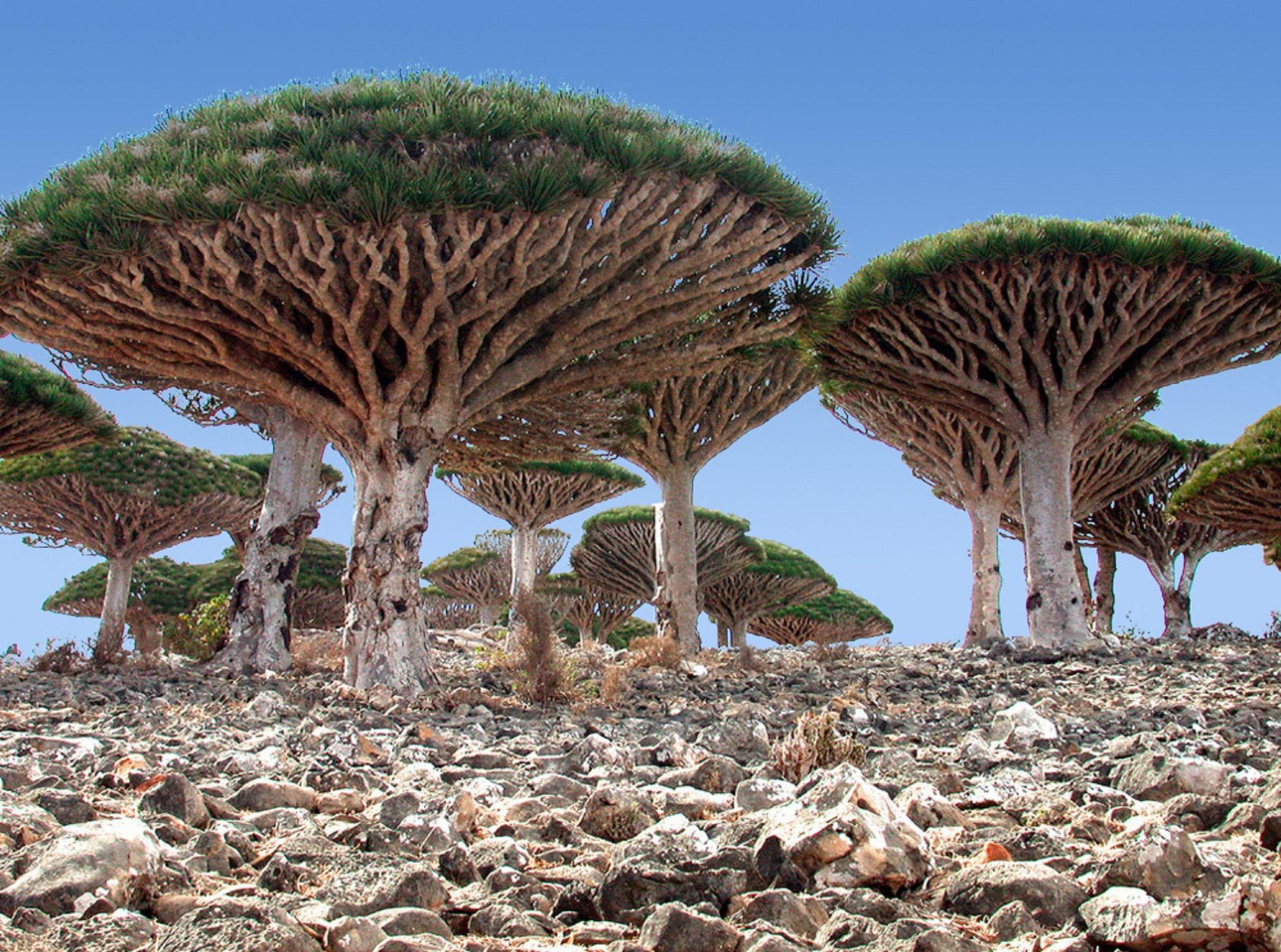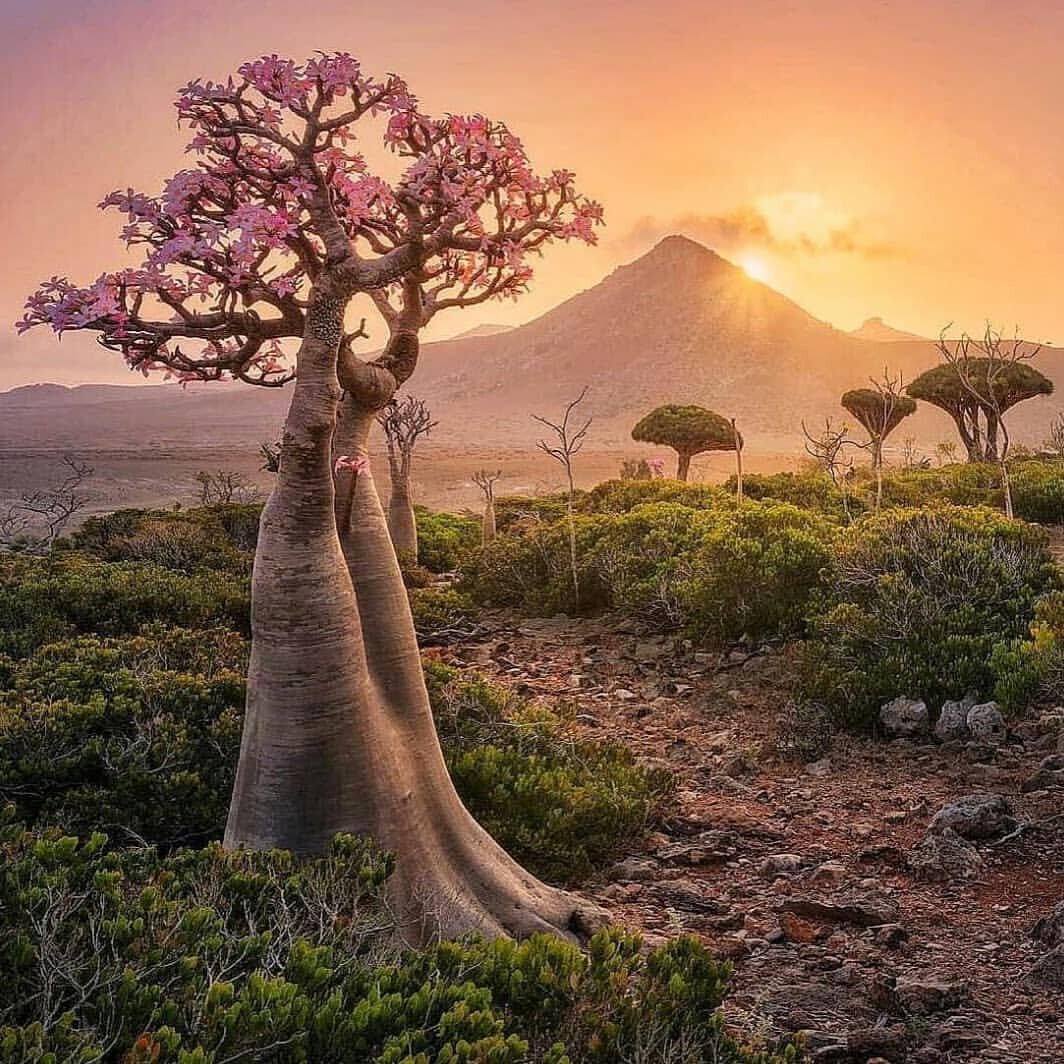Nestled in the Arabian Sea, Socotra Island is often referred to as the “most alien-looking place on Earth,” and for good reason. This remote island, part of Yemen, is home to some of the most bizarre and unique flora and fauna on the planet. Isolated from mainland Africa for millions of years, Socotra’s ecosystem has evolved in extraordinary ways, resulting in species that exist nowhere else in the world.
The Dragon’s Blood Tree: A Living Fossil

Dragon’s Blood Tree
One of the most iconic sights on Socotra is the Dragon’s Blood Tree (Dracaena cinnabari). This umbrella-shaped tree looks like something straight out of a science fiction movie. Its thick branches stretch upward like veins, supporting a dense canopy that casts unusual shadows on the landscape. The tree gets its name from the deep red resin it produces, known as “dragon’s blood.” This resin has been used for centuries in medicine, dye, and even rituals, adding to the tree’s mythical allure.
The Dragon’s Blood Tree is more than just a strange-looking plant; it’s a vital part of the island’s ecosystem. Its umbrella-like canopy helps to reduce soil erosion by catching moisture from the air and shading the ground, allowing other plants to thrive in the harsh, arid climate.
A Unique Ecosystem Evolved in Isolation
Socotra’s isolation has allowed it to develop an ecosystem unlike any other. Around a third of its plant species are endemic, meaning they can’t be found anywhere else on Earth. Among these are the cucumber tree, which bears strange, gourd-like fruits, and the Socotran desert rose, with its bulbous trunk and delicate pink flowers.
The island is also home to a variety of endemic animals, including unique species of birds, reptiles, and insects. The Socotra starling and the Socotra sunbird are just two examples of the island’s unique avian life. Meanwhile, the island’s reptile population is equally diverse, with many species that have adapted to the island’s challenging environment.
Challenges and Conservation Efforts
Despite its beauty and uniqueness, Socotra faces several environmental challenges. Climate change, habitat destruction, and overgrazing by livestock threaten the island’s delicate ecosystem. Conservationists are working hard to preserve this natural wonder, but the island’s remoteness and political instability in Yemen make efforts difficult.
Visiting Socotra is like stepping into another world—a world where nature’s creativity knows no bounds. For those fortunate enough to travel to this remote paradise, it offers an unparalleled opportunity to witness the beauty of an ecosystem that has thrived in isolation for millions of years.
